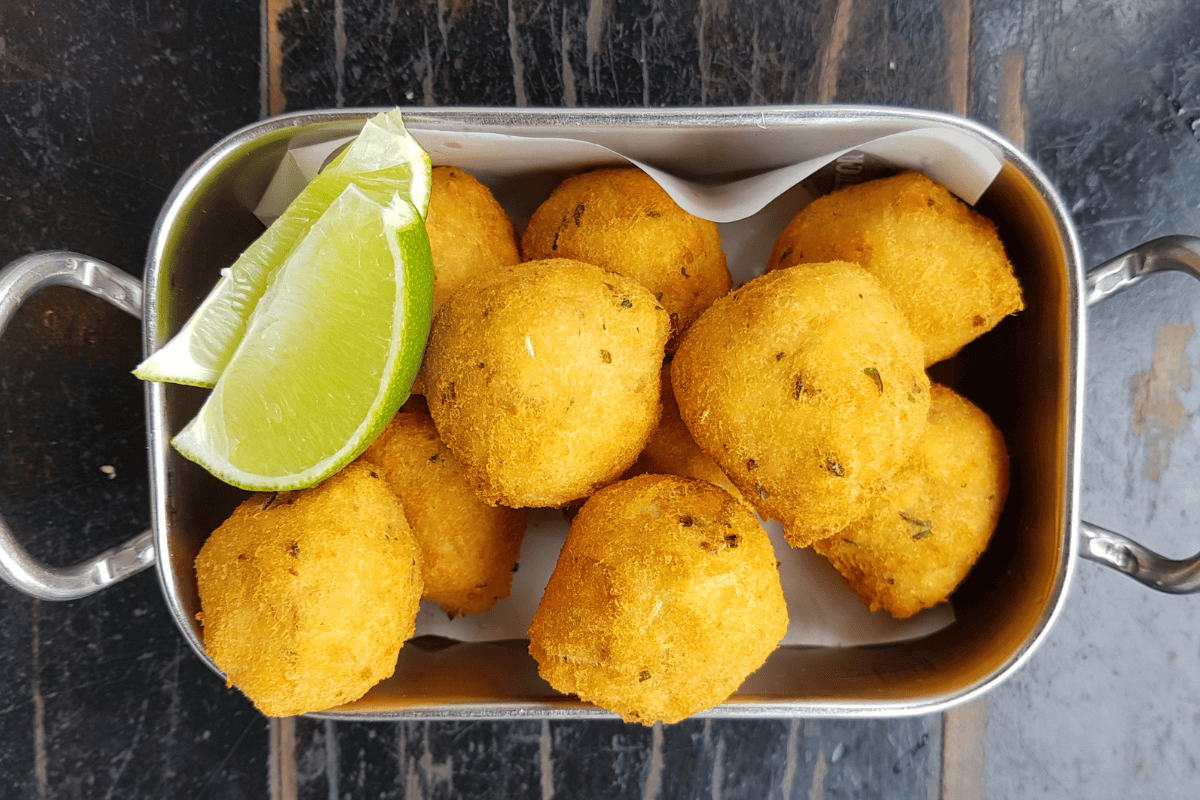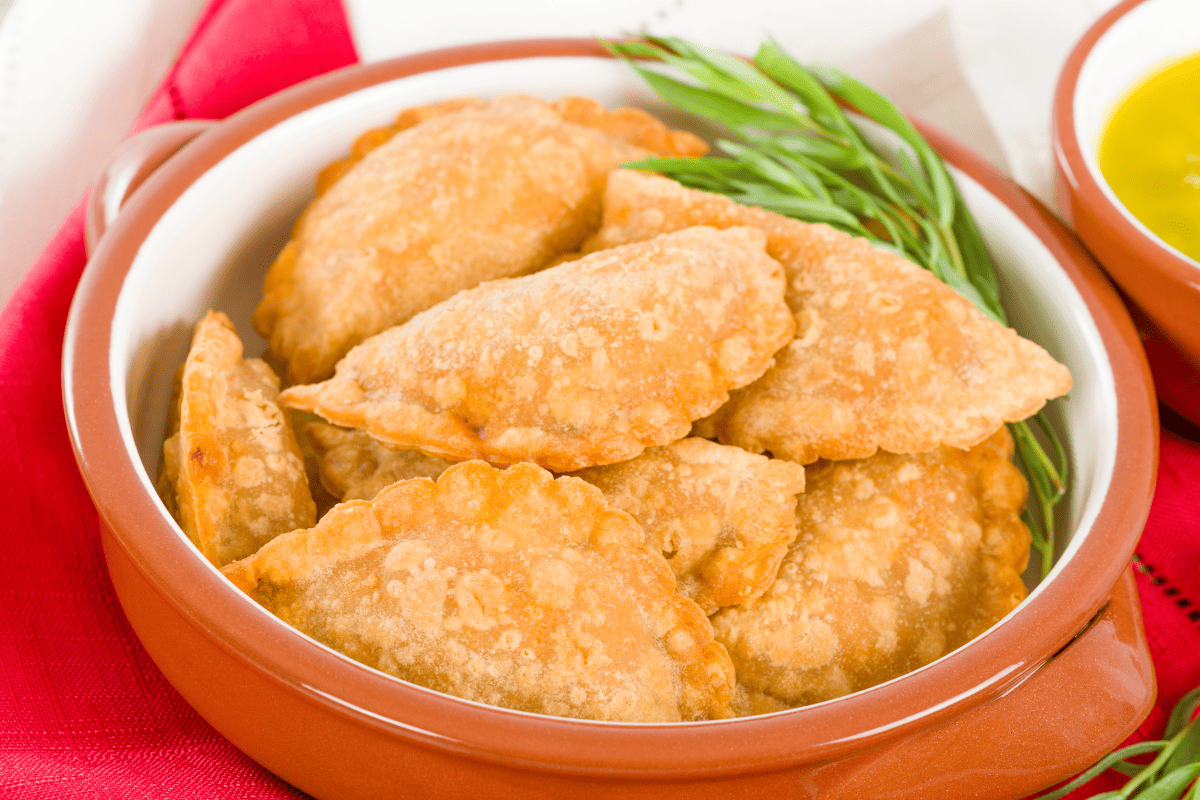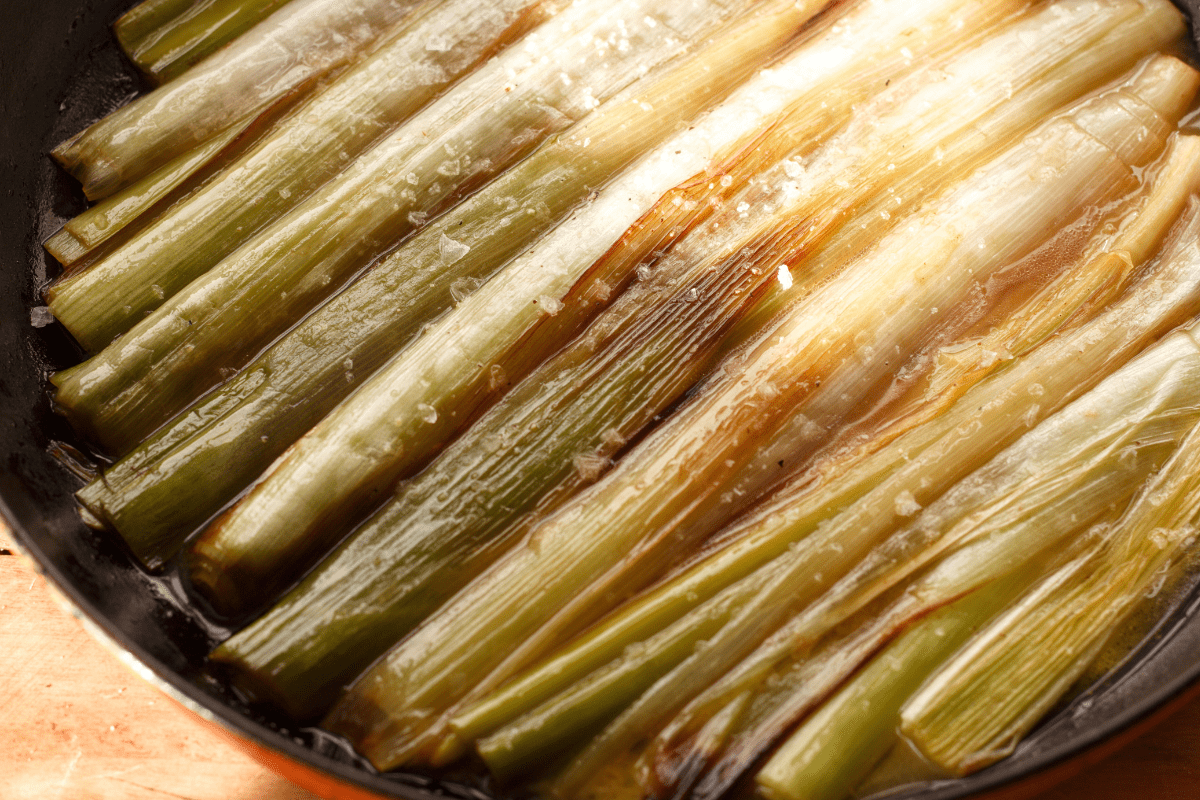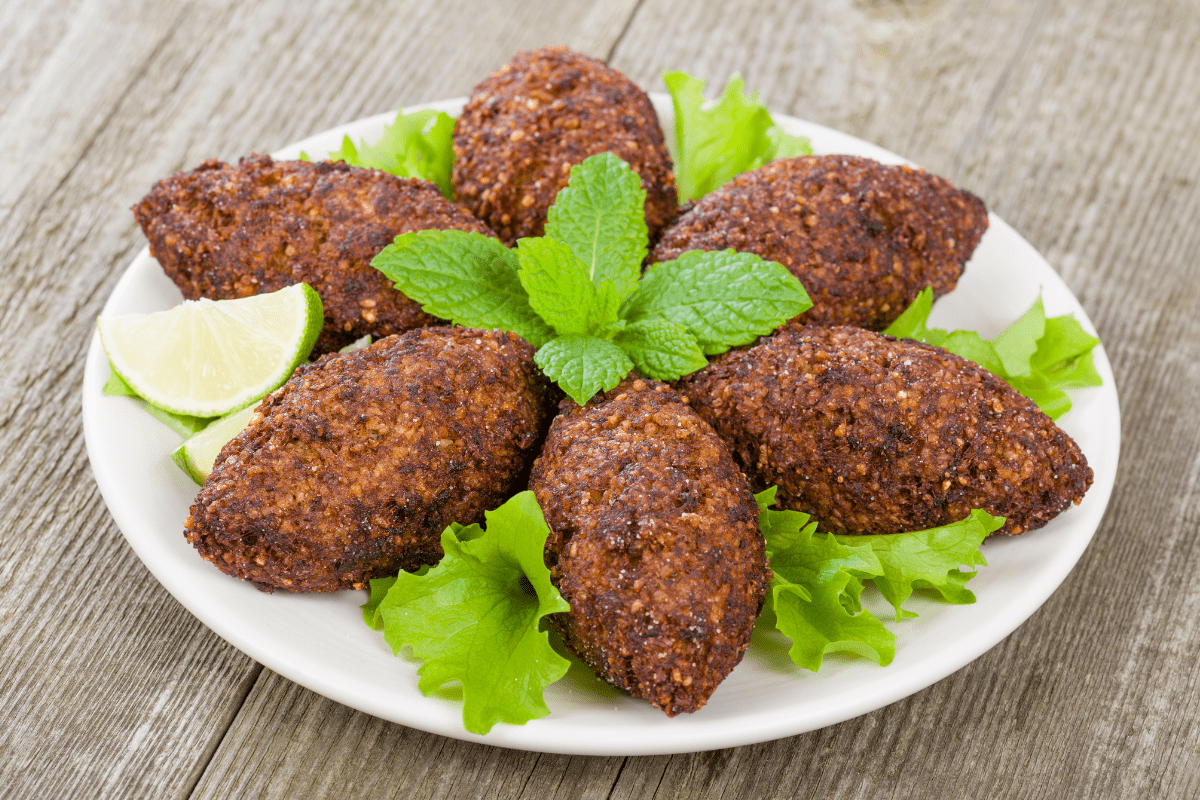
These fried fish balls are a favorite in Brazil, especially on the Christmas dinner table. They are bite-sized, delicious, and very simple to make-three things we love in a recipe. They are, essentially, a kind of fritter, similar to coxinha or acaraje. The filling is much simpler, however, consisting only of salt cod, potato, onion, garlic, egg, and a few herbs and spices.
Salt Cod for Brazilian Fish Balls
The traditional recipe for bolinho de bacalhau uses salt cod. We have used this ingredient before in our bacalhau com natas, or salt cod in cream. Like many salted meats, salt cod originated as a means of preserving the fish year round before refrigeration.
Cod was once especially plentiful in the Atlantic ocean, so many countries sharing a coast with these waters have a long-standing culinary partnership with this type of fish. Portuguese colonists likely brought their recipes for salt cod to Brazil, where it remains a favorite ingredient in a variety of recipes.
While you can use fresh cod for our Brazilian fish balls, we recommend the salt version. It is easy enough to find in most online super markets and specialty stores. Salt cod has a milder flavor and chewier texture that really lends itself to a croquette. Plus, you don’t need to worry about overcooking or undercooking it.
Preparing Salt Cod for Bolinho de Bacalhau
The salt cod we are using for our fish balls is, technically, already cooked. It does need to be soaked for at least a day, however, to rehydrate the meat somewhat and rinse away most of the salt. Ideally, you should change the water at least three times over this period, since it will become saturated with the salt and unable to draw anymore out.
Making the Filling for Fish Balls
The filling for our bolinho de bacalhau consists of shredded salt cod pureed with potatoes, onion, garlic, salt, pepper, egg, and heaps of fresh parsley. We like to saute the onion and garlic beforehand to keep the flavor mild, but you can use them raw if you like a little bite. If you don’t have a food processor or blender, you can just as well mash the ingredients together using a traditional potato masher or whip them using your stand mixer.
Brazilian Fish Balls Recipe (Bolinho de Bacalhau)
Ingredients:
1 lb of salt cod
2 medium russet potatoes, peeled and chopped into small chunks
½ small onion, diced
1 clove of garlic, minced
3 eggs
1.5 tsp salt (more to taste)
Freshly ground black pepper
1.5 oz chopped fresh parsley (about 3 tablespoons)
1 cup panko bread crumbs
½ cup flour
Vegetable oil for frying
Directions:
- Remove the salt cod from the water in which it has been soaking. Transfer it to a stock pot or large saucepan and cover with fresh water. Bring to a boil and then reduce to a rolling simmer. Cook for fifteen minutes, then remove the fish to a plate (keep the boiling liquid).
- Put the chopped potatoes into the same water used to boil the salt cod. Boil them until they are fork tender (around 20 minutes).
- While the potatoes are boiling, heat a small skillet over medium. Add in a drizzle of olive oil, then put in your diced onions. When they have softened (1-2 minutes), add in the minced garlic and cook for a further 30 seconds.
- When the salt cod has cooled enough for you to handle, shred it finely with two forks or your fingers.
- In the belly of a food processor, add in the cooked potatoes, shredded fish, garlic, onion, salt, pepper, and parsley and pulse to combine. Then add in one egg and pulse again until you have a uniform-looking mixture. It should be fairly cohesive. If it is too crumbly, add in a little water.
- Fill a large pot with enough oil to submerge your fish balls (about four cups). Heat over medium-high until it reaches 350 degrees fahrenheit.
- While the oil heats, make a dredging and breading station: put ½ cup all purpose flour in one dish; beat two eggs together in a second dish; add the panko bread crumbs to a third dish.
- Scoop a small amount of your fish ball filling into your hands (oil them beforehand) and roll into a ball. Coat each ball with flour then dip it into the egg mixture (shake off excess). Finally, roll the ball into the breadcrumbs. Repeat until you have used all of your filling.
- When all your fish balls are breaded and the oil is ready, fry them in batches until they are golden brown. Transfer them to a baking sheet lined with paper towels. Serve piping hot with your favorite dipping sauce. (We recommend this creamy garlic sauce.)
More Delicious Brazilian Recipes to Try:
- Slow Cooker Moqueca (Brazilian Fish Stew)
- Stuffed Pumpkin (Camarao na Moranga)
- Bobo de Camarao (Shrimp Chowder)



